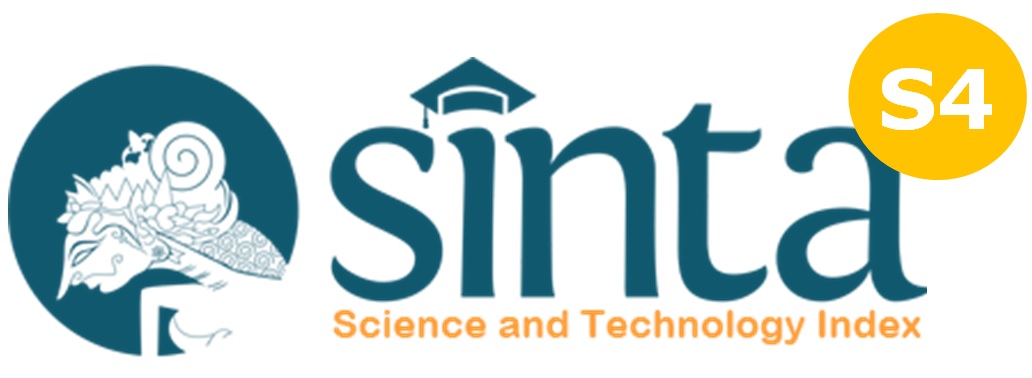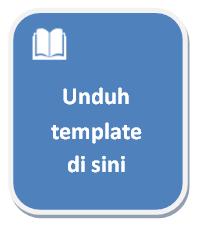Analysis of Treatment Unit Selection in The Design of The Water Treatment Plant (III) Karawang Branch, East Karawang District
DOI:
https://doi.org/10.23969/infomatek.v27i1.26934Keywords:
Karawang, Raw water, Treatment plant unit, drinking water treatment plantAbstract
The Drinking Water Treatment Plant (III) Karawang Branch was developed to increase production capacity and ensure an adequate water supply for the Karawang Service Area. The raw water for this plant is sourced from the West Branch North Tarum Channel (STUB) and has a design production capacity of 100 L/s. The design aims to implement optimal treatment processes to meet the required drinking water quality standards. This study investigates the selection of treatment units for the plant, focusing on raw water quality as the primary criterion to meet the drinking water standards stipulated by Ministry of Health Regulation No. 2 Year 2023. Key water quality parameters that do not meet these standards include total suspended solids (TSS), total dissolved solids (TDS), chemical oxygen demand (COD), biochemical oxygen demand (BOD), dissolved oxygen (DO), sulfide, color, detergent, fecal coliform, and total coliform. The selection of treatment units was conducted using the Water Quality-Based Approach, which considers specific contaminants in the raw water, along with the Literature-Based Approach, involving a review of existing water treatment plants and their efficiency in similar settings. The chosen treatment units include an intake system, hydraulic coagulation, hydraulic flocculation, sedimentation with plate settlers, dual-media rapid sand filtration, chlorination disinfection, and a ground reservoir for water storage. This study contributes to ensuring a sustainable and safe drinking water supply for the Karawang region through an integrated water treatment system.
Downloads
References
Adiyanti, T. (2016). Achievement of the 4K Targets in the Implementation of RPAM in PDAM Tirta Dharma, Malang City. Journal of Environmental Engineering, 8(2). Bandung: ITENAS.
Ali, H., Zhou, X., & Ahmed, S. (2021). The role of hydraulic mixing in coagulant performance and aeration efficiency. Water Research, 190, 116735.
Ayu, M. S., Hadisoebroto, R., & Ratnaningsih, R. (2019). Treatment of performance evaluation at Cisauk water treatment plant, Cisauk Sub-district, Tangerang. Journal of Physics: Conference Series, 1402(2).
Baghapour, M. A., Javan, N., & Kakavandi, B. (2022). Performance of rapid sand filtration in removing suspended solids and microbial contaminants. Journal of Water Supply: Research and Technology—AQUA, 71(3), 455–468.
Brown, R., Chen, H., & Kumar, S. (2021). Comparative analysis of hydraulic and mechanical flocculation in developing countries. Water Science and Technology, 83(4), 753–762.
Droste, R. L. (1997). Theory and Practice of Water and Wastewater Treatment. Canada: John Wiley & Sons, Inc.
Fair, Geyer, & Okun. (1968). Water and Waste Water Engineering - Water Purification and Wastewater Treatment and Disposal (Vol. 2). New York: John Wiley & Sons, Inc.
Government Regulation No. 22 Year 2021 regarding the Implementation of Environmental Protection and Management.
Green, R., Patel, S., & Ahmed, N. (2021). Efficiency and challenges of slow sand filtration in rural water supply. Water Research, 189.
Jones, P., Zhao, Y., & Lin, W. (2020). The role of dual-media filters in modern water treatment systems. Journal of Environmental Engineering, 146(10).
Kawamura, S. (2000). Integrated Design and Operation of Water Treatment Facilities (2nd ed.). New York: John Wiley & Sons, Inc.
Kusumadewi, R. A., Sani, I. K., & Winarni. (2019). The use of multi-criteria analysis in selecting water treatment units in Sadu Water Treatment Plant, Bandung District, West Java Province, Indonesia. Journal of Community Based Environmental Engineering and Management, 3(2), 65-78.
Mahmood, T., Zhang, W., & Chen, Y. (2020). Hydraulic jump coagulation efficiency in drinking water treatment. Journal of Water Process Engineering, 37.
Miller, T., Chen, X., & Wang, Q. (2022). Evaluating rapid sand filtration for high-demand urban water systems. Water Science and Technology, 85(2), 454–465.
Ministry of Health Regulation No. 2 Year 2023 regarding the Implementation of Government Regulation No. 66 Year 2014 on Environmental Health.
Morris, L., Zhang, L., & Ahmed, R. (2022). Community-based applications of hydraulic flocculation in rural water treatment. Sustainable Water Resources Management, 8(2), 245–258.
Regent of Karawang Regulation No.77 Year 2020 regarding the Regional Action Plan for Water Supply and Environmental Sanitation in Karawang Regency 2020–2024.
Praga, B., & Rachmawati, S. D. J. (2018). Benefits of RPAM for PDAM Payakumbuh City: 4K Study. Journal of Environmental Engineering, 8(2). Bandung: ITENAS.
Qasim, S. R., Motley, E. M., & Zhu, G. (2000). Water Work Engineering: Planning, Design, and Operation. London: Prentice-Hall.
Reynolds, T. D., & Richards, P. A. (1996). Unit Operations and Processes in Environmental Engineering (2nd ed.). Boston: PWS Publishing Company.
Sani, I. K., Winarni, & Kusumadewi, R. A. (2020). Optimization of Cipageran water treatment plant, Cimahi, West Java, Indonesia. IOP Conference Series: Earth and Environmental Science, 426, 012026.
Smith, J., Wang, Y., & Lee, T. (2020). Efficiency of hydraulic flocculation systems in water treatment processes. Journal of Water Process Engineering, 35.
SNI 6774:2008. Guidelines for Planning Package Units of Water Treatment Plants. Jakarta: National Standardization Agency.
SNI 8995:2021. Guidelines Water Sampling Methods for Physical and Chemical Testing. National Standardization Agency: Jakarta.
WHO. (2022). Guidelines for drinking-water quality. World Health Organization.
Xiang, H., Chen, Y., & Chen, W. (2020). A comparative study of plate settler and conventional sedimentation processes in water treatment. Journal of Environmental Engineering, 146(4).
Zhao, Y., Ma, J., Zhang, X., & Zhang, Y. (2021). Advances in flocculation and sedimentation for drinking water treatment. Water Research, 190.







